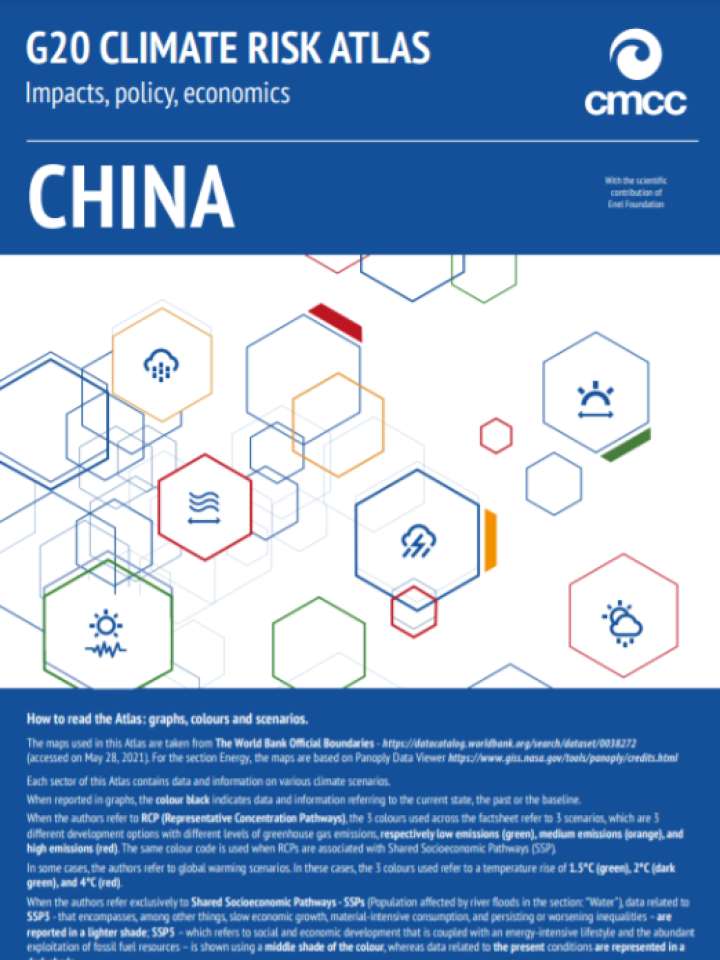G20 Climate Risk Atlas: China
This report summarizes the risks posed on China's climate, ecosystems, food and water systems, and citizens by climate impacts, as well as the country's policies for mitigation, adaptation, and emissions reductions. China presents a great variety of climates due to its size. The north has a temperate climate whereas the south is subtropical, with very hot summers and mild winters. In the summer, monsoons play an important role in determining weather and climate features throughout the country, blowing huge rain showers in from the east. In winter, dry and cold winds come from the northwest. China is expected a correspondingly wide range of climate impacts. It is currently the largest single emitter of greenhouse gases but has made ambitious commitments to cut down on emissions.
The G20 Climate Risk Atlas represents a science-based tool that can support decision-making processes and the planning of required policies. The simple language, attractive features, and design is intended to ensure that the Atlas lends itself to easy consultation and dissemination, therefore opening the door, not only to decision-makers and stakeholders, but also to the general public, creating a participatory and iterative process which can be used to increase public awareness on climate issues. In the process of a sustainable transition, climate change must be considered the fundamental pillar of the political agenda. Only committed and timely mitigation and adaptation actions can limit the intensification of extreme events, the destruction of ecosystems, infrastructure and populations, and in the process enable people to benefit from a better and more equitable future.
Explore further
